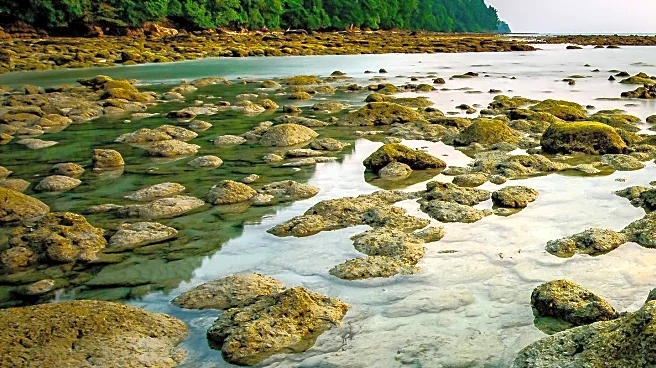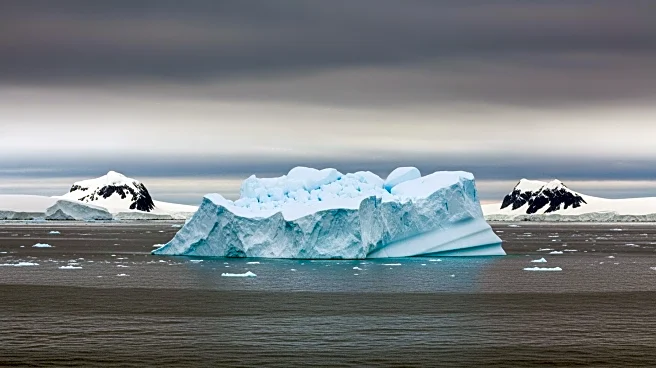What's Happening?
Scientists have uncovered a 6 million-year-old ice core in Antarctica, marking the oldest directly dated ice ever found. This discovery, made in the Allan Hills region, provides a glimpse into Earth's
climate during the Miocene age, a period when the planet was significantly warmer and sea levels were higher. The ice cores contain ancient air bubbles, allowing researchers to study past greenhouse gas levels and ocean temperatures. The study, supported by the NSF Center for Oldest Ice Exploration, aims to understand natural climate change drivers by analyzing the isotopic composition of the ice.
Why It's Important?
The discovery of ancient ice cores is crucial for understanding historical climate patterns and the natural factors influencing climate change. By examining these cores, scientists can gain insights into the Earth's climate system and the role of greenhouse gases over millions of years. This research is particularly relevant as current human activities are rapidly increasing global temperatures. Understanding past climate conditions can help predict future changes and inform policy decisions aimed at mitigating climate impacts.
What's Next?
Researchers will continue to analyze the ice cores to refine their understanding of ancient climate conditions. This includes studying the isotopic composition to trace temperature changes and greenhouse gas levels over time. The findings may influence climate models and contribute to global discussions on climate change mitigation strategies. Further exploration in Antarctica could uncover more ancient ice, providing additional data to enhance climate predictions.
Beyond the Headlines
The preservation of such ancient ice near the surface in the Allan Hills region is attributed to unique environmental conditions, including strong winds and cold temperatures that slow ice movement. This discovery highlights the importance of geological features in preserving historical climate records. The research underscores the need for continued exploration in remote regions to uncover hidden climate archives.












